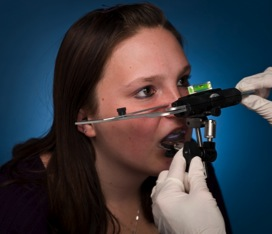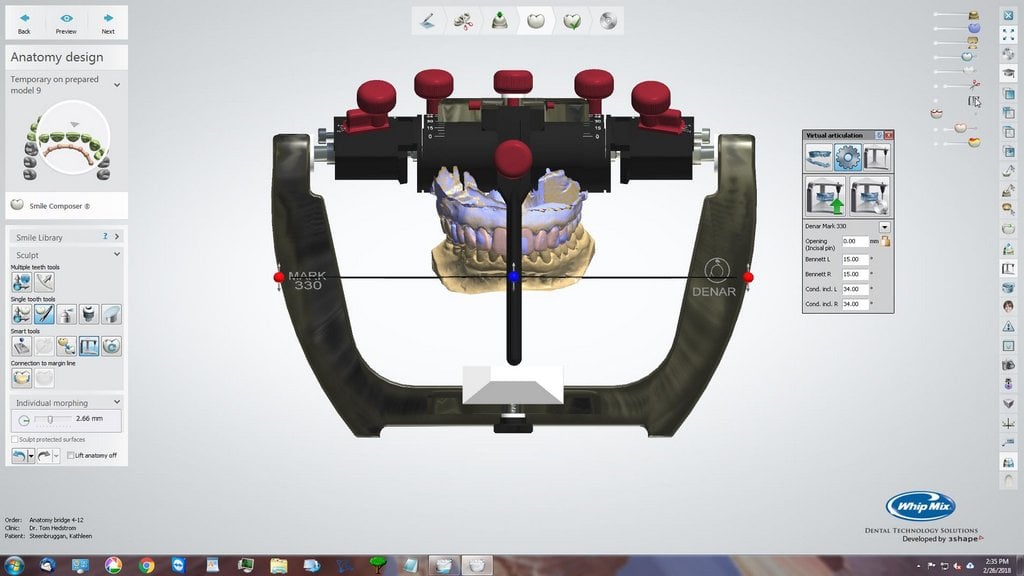
With a growing emphasis on esthetics, more dentists are starting to take a face-bow record and sending it along with the case to the laboratory. Face-bow records can provide valuable information to not only the doctor, but also the dental technicians. However, many dental technicians don't see them on a regular basis and often forget how to use the record when creating the restoration.
Here are some basic reminders to review, so the next time your dental lab receives a case with a face-bow record you are sure to know and understand how to best utilize the information.
1. Face-bows fit a specific series of articulators. They are not all universal.
Face-bows do not transfer to all articulators, just like all model mountings don't transfer to all articulators. Get with the doctor to see which articulators he/she is using and make sure the articulators in your lab will transfer.
2. Face-bows will either be DIRECT or INDIRECT.
Direct Mounting simply means that after you have obtained your face-bow registration and have removed the ear-bow halves from the patient, you transfer the face-bow directly on to the articulator to mount the maxillary cast. With Indirect Mounting, once you have obtained your face-bow registration, you remove the Transfer Assembly from the cross bar and place the assembly on to the articulator using the Transfer Base Assembly for mounting the maxillary cast.
3. Face-bows capture the relationship between the occlusal plane & the horizontal reference.
The occlusal plane is described by the relationship between the upper and lower teeth when they are together in a natural bite. Planes are the flat section defined by at least three (3) points in space. The body and teeth are divided into various planes. For our purpose, we will be focusing on the head, neck and face. The horizontal or reference plane is established by the transverse horizontal axis of the mandible with a point on the inferior border of the right or left bony orbit (ortibtale).
This relationship is generally known as the Frankfort Plane.
4. Face-bows use these 3 points of reference to establish the horizontal plane.
Please see #3 for the points of references used to establish the horizontal plane.
5. Face-bows record the anterior position of the central incisors & any cant to the patients bite.
This invaluable information is extremely helpful to the technician so he can make any needed adjustments in the restoration. Having this information can help minimize reworks.
6. Face-bows do not record lateral or protrusive movements.
In order to use the lateral or protrusive movement record, the doctor is going to have to record these bites separately.
7. Face-bows are simple to use & are worth the time!
Many dentists and technicians are under the impression that a face-bow record is hard to take. However, the fact is that a face-bow record is simple and can be taken by an assistant. Did we mention it could be taken in 90 seconds?











.png)

Leave a comment